
An acarinarium is a specialized anatomical structure which is evolved to facilitate the retention of mites on the body of an organism, typically a bee or a wasp. The term was introduced by Walter Karl Johann Roepke.
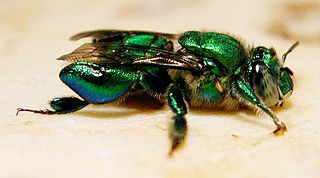
Euglossa is a genus of orchid bees (Euglossini). Like all their close relatives, they are native to the Neotropics; an introduced population exists in Florida. They are typically bright metallic blue, green, coppery, or golden.
Centris cockerelli is a species in the family Apidae, in the order Hymenoptera . The distribution range of Centris cockerelli includes Central America and North America.
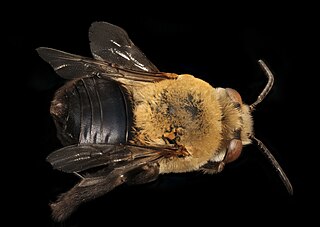
Centris atripes is a species of centridine bee in the family Apidae. It is found in Central America and North America. It is a pollinator of Krameria erecta as well as Senna wislizeni of the painteri variety, which it pollinates during the rainy season.

Triepeolus kathrynae is a species of cuckoo bee in the family Apidae. It is found in the United States and Mexico.
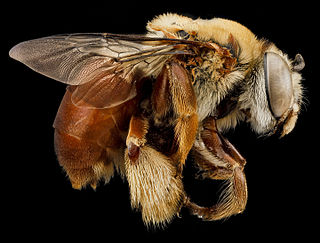
Centris errans, known generally as wandering centris, is a species of centridine bee in the family Apidae. Other common names include the Florida locust-berry oil-collecting bee and spiny bear's-breech. It is found in the Caribbean and North America. The species is one of five from the family Apidae that are endemic to the state of Florida. The species occurs the southernmost portion of Florida.

Epeolus pusillus is a species of cuckoo bee in the family Apidae. It is found in the United States and Mexico. The species is a parasite of Colletes compactus and Colletes ciliatoides.

Triepeolus verbesinae is a species of cuckoo bee in the family Apidae. It is found in the United States and Mexico.
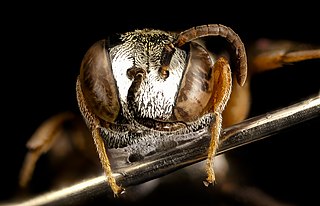
Epeolus howardi, or Howard's cellophane-cuckoo bee, is a species of cuckoo bee in the family Apidae. It is found in North America.
Triepeolus loomisorum is a species of cuckoo bee in the family Apidae. It is found in the United States and Mexico.
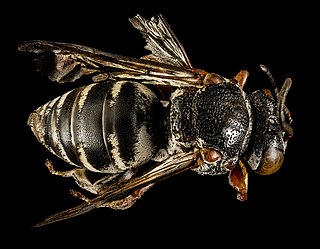
Epeolus lectoides, the cuckoo bee, is a species of cuckoo bee in the family Apidae. It is found in North America. Hosts include Colletes latitarsis and Colletes nudus.
Centris rhodopus, the red-legged centris, is a species of centridine bee in the family Apidae. It is found in Central America and North America.

Triepeolus simplex is a species of cuckoo bee in the family Apidae. It is found in North America.

Triepeolus remigatus is a species of cuckoo bee in the family Apidae. It is found in the United States and Mexico.

Centris lanosa is a species of centridine bee in the family Apidae. It is found in North America.
Centris caesalpiniae is a species of centridine bee in the family Apidae. It is found in Central America and North America.

Paranomada is a genus of cuckoo bees in the family Apidae. There are at least three described species in Paranomada.
Centris hoffmanseggiae is a species of centridine bee in the family Apidae. It is found in North America.

Centris analis is a solitary, oil-collecting bee with a geographical range extending from Brazil to Mexico. C. analis is a small, fast-flying bee with an average head width of 3.21mm and 3.54mm for males and females, respectively. While most species of the genus Centris create burrows for nesting, C. analis and other species of the subgenus Heterocentris build nests in pre-existing cavities rather than in the ground. C. analis is a pollinator of many plant species, especially of those in the family Malpighiaceae, which has encouraged its application in acerola orchards.
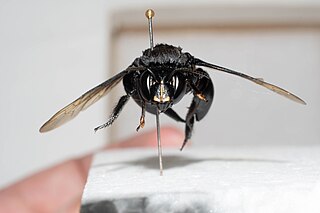
Eulaema cingulata is a large-bodied black and orange corbiculate bee in the genus Eulaema. It is characterized by its size and flashy orange segments of its metastoma. Unlike other Eulaema, E. cingulata has white markings on its face. Specifically, T1 andT3 are black while T2 and T4 through T7 are cream or slightly orange in color. These bees are easily mistaken for bumblebees . However, they are actually members of the Euglossini, or orchid bees.















